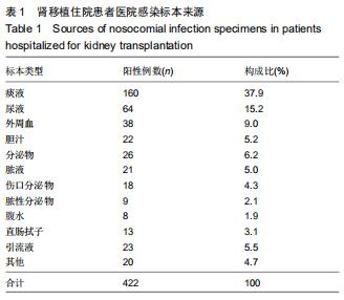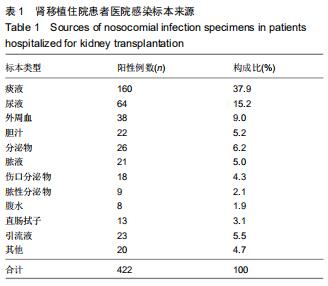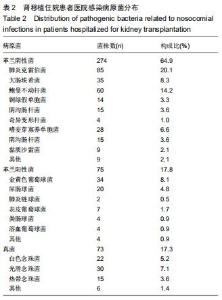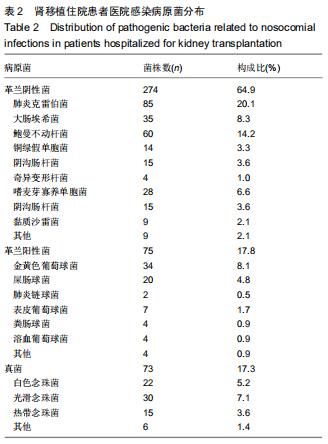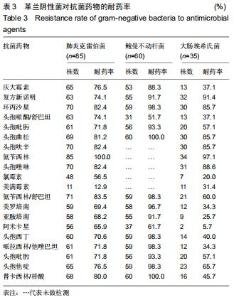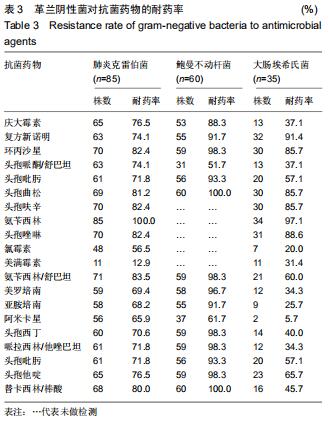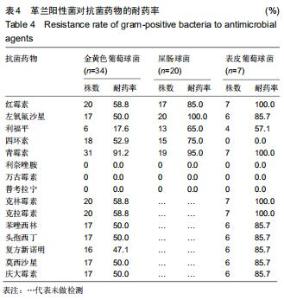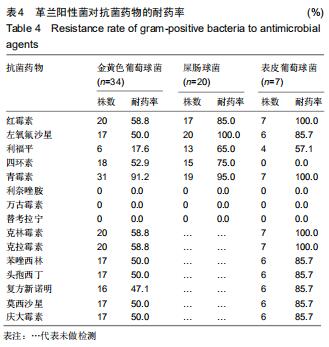|
[1] 马明惠,何重香,贺学宇,等.预见性护理措施在预防肾移植术后肺部感染中的应用[J/CD].实用器官移植电子杂志,2017,5(1): 28-30.
[2] OOMS L, IJZERMANS J, VOOR IN 'T HOLT A, et al. Urinary Tract Infections After Kidney Transplantation: A Risk Factor Analysis of 417 Patients. Ann Transplant. 2017;22:402-408.
[3] 高建,张媛,成伟丽,等.器官捐献移植肾动脉细菌感染破裂的诊疗对策[J].器官移植,2017,8(4):311-313,332.
[4] 龙成美,杨华,李新长.肾移植术后受者新型隐球菌感染的临床分析[J].器官移植,2019,10(4):434-438.
[5] 杨进,张美霞,闰沛,等.肾移植后新发糖尿病危险因素的Meta分析[J].中国组织工程研究,2019,23(15):2450-2460.
[6] 李智斌,张更,刘克普,等.公民逝世后器官捐献肾移植早期多重耐药菌感染的临床研究[J].器官移植,2017,8(5):386-391.
[7] 中华医学会器官移植学分会.器官移植术后耐药菌感染诊疗技术规范(2019版)[J].中华器官移植杂志,2019,10(4):352-358.
[8] 谈宜斌,金学兰,李源,等.肾移植受者术后医院感染流行病学单中心分析[J].器官移植,2019,10(4):429-433.
[9] 王鑫,崔向丽,杨辉,等.肾移植术后尿路感染病原菌及抗感染治疗方案分析[J].中国医院药学杂志,2017,37(12):1195-1199.
[10] 沈彬,门同义,王建宁,等.影响移植后肾功能恢复的感染因素及对策[J].中华器官移植杂志,2017,38(9):550-554.
[11] 李明霞,彭贵主,曾宪鹏,等.肾移植后尿路感染危险因素荟萃分析[J].中华器官移植杂志,2016,37(3):159-164.
[12] 李聪.肾移植术后早期尿路感染病原体分布及药物敏感性分析[D].苏州:苏州大学,2016.
[13] 胡志军,潘恺,潘晓龙,等.2017年安徽省某三甲医院细菌耐药性监测[J].中国抗生素杂志,2019,44(2):248-253.
[14] SEN A, CALLISEN H, LIBRICZ S, et al. Complications of Solid Organ Transplantation: Cardiovascular, Neurologic, Renal, and Gastrointestinal. Crit Care Clin. 2019;35(1): 169-186.
[15] HU FP, GUO Y, ZHU DM, et al. Resistance trends among clinical isolates in China reported from CHINET surveillance of bacterial resistance, 2005-2014. Clin Microbiol Infect. 2016;22 Suppl 1:S9-14.
[16] 胡付品,郭燕,朱德妹,等.2016 年中国 CHINET 细菌耐药性监测[J].中国感染与化疗杂志,2017,17(5):481-491.
[17] 胡付品,郭燕,朱德妹,等.2017年CHINET中国细菌耐药性监测[J].中国感染与化疗杂志,2018,18(3):241-251.
[18] 王明贵.广泛耐药革兰阴性菌感染的实验诊断、抗菌治疗及医院感染控制:中国专家共识[J].中国感染与化疗杂志, 2017,17(1): 82-93.
[19] POUCH SM, KUBIN CJ, SATLIN MJ, et al. Epidemiology and outcomes of carbapenem-resistant Klebsiella pneumoniae bacteriuria in kidney transplant recipients. Transpl Infect Dis. 2015;17(6):800-809.
[20] BIAS TE, MALAT GE, LEE DH, et al. Clinical outcomes associated with carbapenem resistant Klebsiella pneumoniae (CRKP) in abdominal solid organ transplant (SOT) recipients. Infect Dis (Lond). 2018;50(1):67-70.
[21] 张倩茹,李甲,孙向东,等.多药耐药菌感染患者临床资料分析与预测[J].中华医院感染学杂志,2016,26(20):4648-4650.
[22] 邱瑶雪,李家斌,程君,等.2013-2015 革兰阴性多药耐药菌的分布、耐药性及危险因素分析[J].中华医院感染学杂志,2017,27(5): 980-983.
[23] 陈国敏,王东辰,许会彬,等.3889份住院患者血培养病原菌分布及耐药性分析[J].中国抗生素杂志,2019,2(44):266-269.
[24] 刘永芳,陈金文,周风,等.血流感染病原菌构成及其多重耐药性分析[J].中国抗生素杂志,2017,42(12):1056-1060.
[25] 郭娟,刘旭华,袁彩红. 2012年医院感染病原菌分布及耐药性分析[J].中华医院感染学杂志,2014,24(24):6015-6017.
[26] 詹仁雅,MUNGUR RAJNEESHL,柴兆晖,等. 2015至2017年某综合性医院神经外科细菌检出情况的临床分析[J].中华医院感染病杂志, 2019,12(1):60-63.
[27] 王晚连.阿米卡星致儿童前庭功能损害4例分析[J].中国误诊学杂志, 2007,7(28):6816.
[28] 乔良伟,梁韶峰,曲青山.尸体肾移植术后围手术期并发症治疗体会[J].医药论坛杂志,2013 ,34(7):63-64.
[29] 中华医学会器官移植学分会.肾移植术后外科并发症处理技术操作规范(2019版) [J].器官移植,2019,10(6):653-660.
[30] 中华医学会器官移植学分会.肾移植护理技术操作规范[J].实用器官移植电子杂志,2019,7(5):334-336.
[31] 王宏伟,杨丽萍,孙美玲,等.肾移植术后患者医院感染病原菌与耐药性分析[J].中外医疗,2019,38(23):63-65,72.
|
